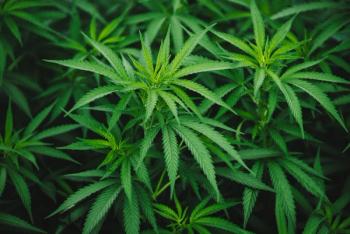
Cannabis Science and Technology
- January/February 2023
- Volume 6
- Issue 1
- Pages: 14-19
Extraction 2022 Highlights and 2023 Predictions

There goes another year in the books. This review of 2022’s extraction greatest hits takes a look at discoveries, advancements in technology, and other highlights from the year. This article also lays out some predictions for 2023, which is set up to be an interesting year with less access to funding that could slow the development of new technology or innovation in the extraction space.
2022 in Review
Every year the cannabis industry advances in market growth, technology, and product innovation.
In 2022, the US cannabis market:
- Added 1 new medical state
- Added 1 new adult use states
- *Projected* 21% overall year over year revenue growth
The cannabis industry experienced massive growth during the peak of the pandemic in 2020 and 2021. However, Figure 1 demonstrates that a correction is occurring especially in mature markets that experienced the most growth. In 2022, Colorado, Nevada, Oregon, and Washington markets declined to revenues that were seen in 2019.
In 2022, 43% of the market consisted of the sale of products using cannabis extract as the main product or an infusion ingredient. The other 57% of revenue was made up of flower and pre-rolls, as seen in Figure 2. The extraction and processing segment of the industry has the most potential for growth as extracts and infused products have unlimited potential for innovation. Flower and pre-roll products seem to have little room for end product innovation and experience the most price compression. Price compression and the hyper-competitive nature of flower sales have driven cultivators to find ways to convert cannabis biomass into higher value products. The result is an increase in concentrates, other processed products, and higher quality products in order to demand higher prices.
Innovation in the extraction and processing segment is often driven by organizations looking for a competitive edge or ways to reduce operating and production costs. 2021 was the year tetrahydrocannabinol (THC) isomers surfaced on the mainstream hemp market. 2022 was the year of THC isomer regulations, oversupply of hemp and cannabis biomass, and the solventless sweep. In February 2022 we reviewed the foundation of THC isomers (3) due to the rapid rise of accessibility to these isomers, mainly delta-8 THC, with no regulatory agency ensuring these products are safe to consume. Delta-8 THC is intoxicating, but milder than delta-9 THC. Delta-8 THC continued to make national news in 2022 as consumers were purchasing these intoxicating “hemp-derived” products from gas stations across the US. As demonstrated in Figure 3, the process by which delta-8 THC is produced involves converting cannabidiol (CBD) into delta-8 THC using strong acids, harsh solvents, and heat.
In the process, unidentifiable non-THC by-products are showing up on chemical analyses. In addition to this, no one is testing for the solvents and acids that are being used to produce these products. These both are cause for concern among scientists as they could present serious health risks to consumers (4). Each state has reacted differently to the rise of delta-8 and its potential consumer safety risks. In Figure 4 you can see that 21 states have strictly banned or regulated delta-8 THC.
In most adult-use states, delta-8 is regulated, but products are available. Delta-8 THC products are offering hemp operators another revenue stream in a flooded CBD market where many are being forced out of business. It is easy to see how operators would be willing to take the risk associated with producing delta-8 products in the hypercompetitive hemp market with a major oversupply of hemp biomass.
Another result of hemp biomass continuing to be in an oversupply and regulated cannabis market prices in 2022 plummeting was the rise in operators converting CBD into delta-9 THC. Operators in states like Washington and California have begun sourcing hemp biomass, extracting CBD, then converting CBD to delta-9 THC in mass quantities. The cost of hemp and the conversion process is so low, which has resulted in prices for extracts in the adult-use and medical markets to fall to all-time lows.
Counter to the falling prices and market compression, concentrates with clear differentiation rapidly expanded in 2022. Products with minor cannabinoids have increased in revenue by 30–1200% depending on the state (6). With CBD losing its novelty, more impactful minor cannabinoids such as cannabigerol (CBG) and cannabinol (CBN) have captivated consumers. Demand for minor cannabinoids from consumers has driven more companies to offer products with these minor cannabinoids. The demand is there, but more importantly these cannabinoids can be sourced from hemp, which creates an opportunity for organizations to produce in-demand products with higher margins.
Solventless products took the market by storm in 2022, increasing in market share by more than 100% (6). Solventless products are produced without using a solvent-based extraction method. The extract is produced using a rosin press method, ice water hash, or a combination of both methods. Solventless extract has made its way into the market through concentrates, vapes, as well as edibles and are continuing to expand. Solventless concentrates seem to offer a different flavor profile that consumers are enjoying. However, with less THC, more terpenes, and more balanced cannabinoid profiles, these concentrates seem to be offering consumers superior experiences with both flavor and high. Solventless products are demanding much higher prices than their counterparts and consumers are paying it! It seems as though consumers are understanding of the fact that producing solventless concentrates and products costs more and is higher in value than other products. This demonstrates a shift in consumer buying behavior where they are looking for added value beyond price and THC. This is an exciting turn in the market and operators are rapidly pivoting to produce more solventless products.
Among solvent extraction methods, a rise in scalability and streamlining took center stage. More than ever, manufacturers are producing systems that minimize the need for human interaction and maximize automation. Ethanol extraction and solvent recovery has never been faster and more efficient by utilizing automation and continuous feed technology. Supercritical fluid CO2 extraction saw the introduction of dewaxed extract within the CO2 extraction system. This eliminates the need for any post-processing, which dramatically improves extraction efficiency and overall cost of production. It will be interesting to see if these advancements prove the value of their high equipment cost.
2023 Predictions
The US has experienced a turbulent and unpredictable past few years, however, the future continues to be unpredictable. Nothing seems entirely stable or consistent, which means predictions are even harder to make. While the economy continues to reveal the beginning of a recession, the federal government has recently made some political moves that has the public convinced that federal legalization is around the corner. The recession in combination with these changes in the federal political climate has illuminated a few key predictions for 2023.
- Price compression will continue, forcing more companies out of business.
- To combat this, companies will shift to producing more premium products to maximize margins.
- This will also lead to more rapid and expansive product innovation to offer a competitive edge.
- THC isomers will remain available on the market unless consumers demand regulation.
- Hemp will continue to plummet in price and will supply the THC operators with cheap access to CBD for conversion to THC.
- With more blood in the water, mergers and acquisitions will continue to rise.
- New medical and adult-use states will enter the space creating markets that demand higher prices. This will create more opportunity for companies to enter more states and multi-state operators (MSOs) to capture higher profit margins.
- With the federal administration shedding a more positive light on the cannabis industry and the potential for safe banking, more investment money will enter the space.
- This will drive growth and innovation in both plant touching and ancillary cannabis companies.
- Equipment, real estate, and operating capital loans and financing options will become more readily available.
- Extraction methods and equipment will become more efficient and selective, creating more options for product formulation.
- US adults on the fence about whether or not to accept cannabis as a medical or recreational product will finally enter the cannabis space as consumers.
Whether or not these predictions come to fruition, the cannabis industry as a whole has continued on an upward and positive trajectory both from a revenue generating and political perspective. This year will be telling as to the cannabis industry’s true ability to be “recession-proof” as well as understanding the timeline for federal legalization.
References
- Mining for Gold: BDSA Market Outlook, Key Insights, and Ways to Win
https://bdsa.com/wp-content/uploads/2022/10/BDSA-Mining-for-Gold-Sept-2022.pdf . - Cannabis Product Sales by Category U.S. 2020-2022
https://www.statista.com/statistics/1281580/us-cannabis-product-sales-by-category/ . - Friesen, L. How Are Tetrahydrocannabinol—THC—Isomers Entering the Market? Cannabis Science and Technology. 2022, 5 (1), pp 14–15.
- Delta-8-THC Craze Concerns Chemists
https://cen.acs.org/biological-chemistry/natural-products/Delta-8-THC-craze-concerns/99/i31 . - CBD Oracle Delta-8 is Available in 30 States While Others Try to Ban It
https://cbdoracle.com/news/policy/delta-8-thc-legal/ . - CBN and CBG Sales See Rapid Growth as CBD Sales Slow in Cannabis Markets
https://bdsa.com/cbn-and-cbg-sales-see-rapid-growth/ .
About the Columnist
Lo Friesen is the founder, CEO, and Chief Extractor of Heylo. With a background in chemistry and clinical research, Lo was inspired to explore cannabis as a medicine and to enter the emerging industry. She joined Eden Labs, a leading CO2 extraction equipment manufacturer to support and expand a Research and Development department. There she managed the development of their latest and greatest CO2 extraction system. In 2017, after working with Eden Labs and another cannabis processor, Lo launched Heylo with a mission to help people get more out of life with cannabis.
How to Cite this Article:
Friesen, L., Extraction 2022 Highlights and 2023 Predictions, Cannabis Science and Technology®, 2023 ,6(1), 14-19.
Articles in this issue
Newsletter
Unlock the latest breakthroughs in cannabis science—subscribe now to get expert insights, research, and industry updates delivered to your inbox.





